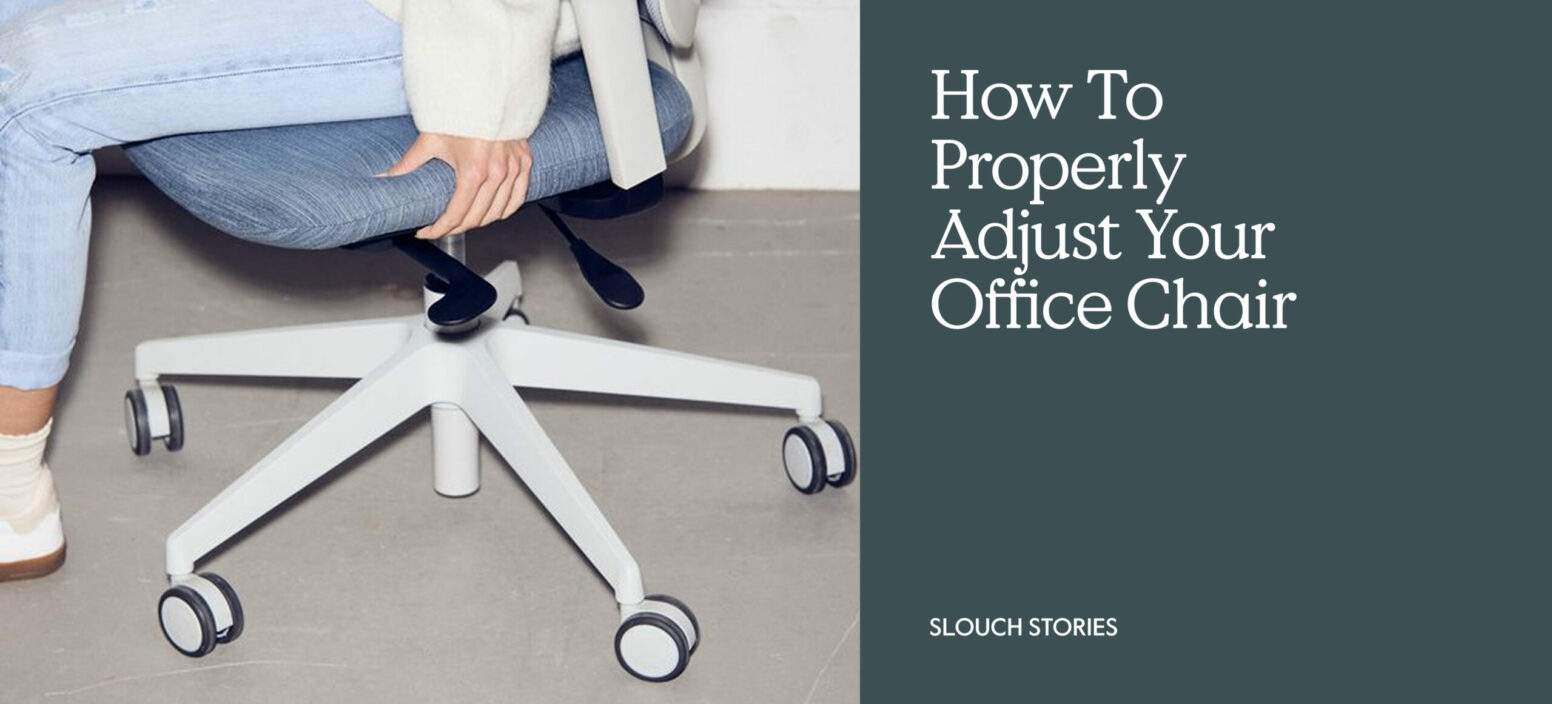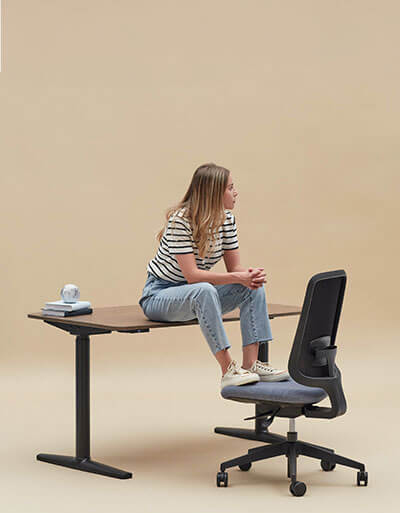If you’re working from home, or stuck in the office for long stretches of time, you know that your chair can be your best friend or your worst enemy. When it’s good, you’ll feel supported and comfortable all day long. But when it’s bad, enter back pain, a stiff neck and poor posture.
Whether you’ve just received a brand new office chair or you’re making do with a secondhand one, there are some adjustments you’ll need to make to ensure it supports your back and neck.
At Slouch, we believe in fully adjustable office chairs that can be specifically adapted to your body shape. That’s why we only use moulded foam for the seat, and why each of our chairs is tested for long-term support.
Many people don’t understand what each of their chair levers does or why they’re important, but we’re going to change that. Here’s how you can properly adjust your office chair for maximum comfort.
What do we mean by posture & why does it matter?
Posture means the position you sit or stand in. Good posture is when your entire body is properly aligned. This is when your head is positioned properly over your shoulders, your spine follows its natural curve, and your weight is evenly distributed across both feet.
However, when your body is misaligned, you get bad posture. This doesn’t just mean you look hunched over or less professional – it causes strain and pain and can even lead to long-term musculoskeletal conditions.
Offices are a breeding ground for bad posture because we spend so long working at office furniture that doesn’t necessarily fit our bodies well. That forces us to adapt using bad posture. That’s why it’s important to ensure that you’re actively working to improve your posture and the environment that either helps or hinders it.
1. Adjust your seat height
The first adjustment to make is the height of your office chair. Your feet should rest flat on the floor, with your knees bent at a 90-degree angle. Your thighs should be roughly parallel to the ground, with your hips slightly above your knees.
This is the optimum position for even weight distribution and will help to prevent strain on your thighs or your lower back.
If you can’t seem to get this position right, then you might need a footrest. These are usually needed when your desk is on the higher side.
2. Choose your seat depth
Not all office chairs come with a seat depth adjustment, but at Slouch, we think it’s necessary for the ultimate back support, which is why all of our home office chairs come with adjustable seats.
To choose the right depth, slide right to the back of the seat so you’re supported by the backrest, then check the space behind your knees. Ideally, you want a small gap of around two to three fingers’ width between the front of the chair and the back of your knee.
If the gap is too large, then bring the seat forwards slightly and recheck the width to ensure it’s comfortable.
3. Correct your lumbar support
The natural curve in your lower back is known as your lumbar spine, and it supports the weight of your upper body. Without proper support, you may find that you slouch too much while working, which will only result in back and/or neck pain.
Most ergonomic chairs come with an adjustable lumbar support that should line up with the curve of your lower back. Raise it or lower it until it sits right in that ‘S’ curve (usually around naval height).
4. Get the armrests right
Another overlooked aspect of the office chair, but an important one.
The armrests should be set so that your elbows sit at a 90 to 100-degree angle when they’re resting on the arms of your chair. Your shoulders should feel loose rather than hunched, and your wrists should stay straight when you’re using the keyboard or mouse.
You’ll know if your armrests are too high because your shoulders will feel tense. Too low, and you might find that you lean or slump in your chair.
5. Adjust your recline
The auto-adjusting recline on an office chair helps to balance your weight so the chair moves with you. You can lock this into place (Slouch office chairs have 4 locking positions to choose from), but actually, it’s better for your spine to leave it in the unlocked position, allowing freer movement.
If you do want to lock your auto recline into place, adjust it so you’re leaning back a little (around 100 to 110 degrees). This will take the pressure off your lower back.
6. Other considerations
There’s lots to think about when adjusting your office chair to the right settings for you. Once you feel you’re happy with the chair’s adjustments, it’s time to think about the rest of your desk.
Your monitor or screen should be about an arm’s length away, and the top of the screen should sit about level with your eyes. This means you’re not looking down or up at your monitor, which could cause pain in your neck. If your monitor is too low, then a screen raiser (or a sturdy pile of books) can really help.
Your keyboard and mouse should sit at the same height as your elbows so your forearms are parallel to the floor. They should be close enough so you’re not having to stretch or reach awkwardly. We’d even suggest that you keep pens and notebooks within arms’ reach so you’re not twisting for those either.
Adjusting your office chair isn’t rocket science, but it can take a little bit of tweaking to find the right position for you. If you think you’ve cracked it, use the chair for a day or two and adjust as necessary. Once you’ve got the sweet spot, you’ll never want to switch chairs again!
Want to set up your new Slouch chair in your home office? See here for full installation instructions and useful setup videos.

